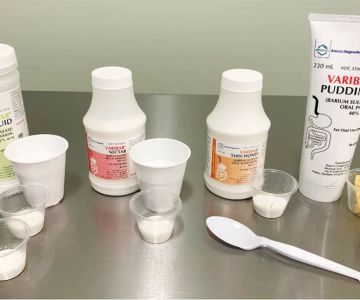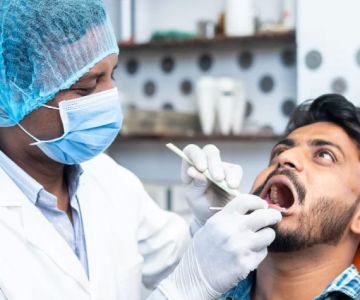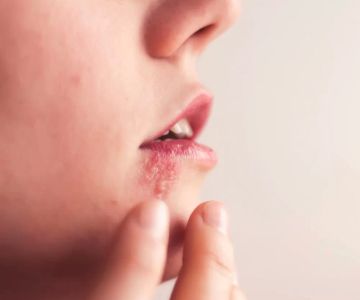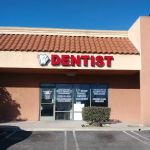Understanding Oral Special Tests: What Is Checked and Why It Matters
Oral special tests are an essential part of dental examinations that go beyond routine checkups. These tests help dentists evaluate the health and function of various oral structures, detect early signs of disease, and formulate effective treatment plans. In the United States, where dental health awareness is steadily growing, understanding what all is checked with oral special tests can empower patients to take a proactive role in their oral care.
Oral special tests encompass a variety of diagnostic tools designed to assess soft tissues, bone integrity, nerve function, and the overall environment within the mouth. These tests include everything from simple tactile examinations to advanced imaging and biochemical analysis. They are critical in diagnosing conditions like oral cancer, temporomandibular joint disorders (TMJ), periodontal diseases, and nerve injuries.
1. Types of Oral Special Tests and Their Diagnostic Purpose
1.1 Visual and Palpation Exams
The most basic yet crucial oral special tests involve visual inspection and palpation. Dentists examine the tongue, cheeks, gums, floor of the mouth, and throat for abnormalities such as lesions, swelling, color changes, or ulcerations. Palpation involves feeling for lumps or areas of tenderness, which can indicate infection or pathology.
A real-life example involves a patient named Laura, who noticed a persistent sore spot on her tongue. During her dental visit, the oral special tests revealed a small lesion that was biopsied early, leading to timely diagnosis and treatment of oral cancer. This case highlights the life-saving potential of routine special tests.
1.2 Sensory and Nerve Function Tests
These tests assess the integrity of the nerves supplying the oral cavity. Techniques such as light touch, pinprick, and temperature sensation help identify nerve damage or neuropathies that can cause pain or numbness. In cases of trauma or dental surgery, nerve function tests are vital to monitor recovery.
1.3 Mobility and Function Tests
For teeth and jaw assessment, mobility tests check for looseness that may indicate periodontal disease or trauma. Functional tests include evaluating jaw opening range and joint sounds to detect temporomandibular disorders (TMD). These tests can uncover problems that affect chewing, speaking, and overall quality of life.
2. Advanced Diagnostic Oral Special Tests
2.1 Imaging Techniques
Modern dentistry heavily relies on imaging as a special test category. X-rays, cone beam computed tomography (CBCT), and MRI scans allow visualization of bone structure, tooth roots, and soft tissues. These images help detect hidden decay, cysts, bone loss, or tumors that cannot be seen during a clinical exam.
For example, when John experienced unexplained jaw pain, CBCT imaging—a form of oral special test—revealed an impacted wisdom tooth causing pressure on nerves, which was then surgically removed with great relief.
2.2 Biochemical and Microbial Tests
Some oral special tests analyze saliva, plaque, or tissue samples to detect infections or biochemical markers of disease. Tests for specific bacteria associated with periodontitis or markers indicating oral cancer are becoming increasingly common in dental practices.
3. The Role of Oral Special Tests in Preventive Dentistry
Oral special tests are not only about diagnosing existing problems but also crucial in prevention. Early identification of risk factors such as enamel erosion, abnormal bite, or precancerous lesions allows dentists to intervene before serious conditions develop.
Take the case of Mark, a young adult whose dental checkup included a special test revealing early enamel wear caused by nighttime grinding. With this information, his dentist recommended a custom night guard, preventing further damage and costly procedures.
4. How Oral Special Tests Improve Treatment Outcomes
When dentists have detailed diagnostic information from special tests, they can design precise and personalized treatment plans. This tailored approach improves the effectiveness and efficiency of care, minimizes complications, and enhances patient comfort.
For instance, in managing TMJ disorders, special tests measuring jaw movement and muscle tenderness help identify the exact source of pain. This allows targeted therapies such as physical therapy or occlusal splints rather than generic pain medications.
5. What Patients Can Expect During Oral Special Testing
Many patients may feel anxious about special tests, but most are non-invasive and painless. During a typical dental visit, the dentist or hygienist may conduct several oral special tests seamlessly as part of the exam. These may include using a small mirror and probe, gentle palpation, or asking the patient to perform jaw movements.
For more advanced tests like imaging or biopsies, the dental team explains the procedures thoroughly to ensure patient comfort and understanding. The overall goal is to create a thorough picture of oral health without causing discomfort.
6. Encouraging Regular Oral Special Tests for Lifelong Oral Health
Regular dental visits incorporating oral special tests are critical for maintaining oral health, especially for individuals at higher risk of diseases, including smokers, older adults, and those with systemic conditions like diabetes. These tests act as an early warning system, enabling timely interventions and improved quality of life.
Patients in the United States are encouraged to discuss with their dentists about the oral special tests used in their care. Staying informed empowers them to recognize symptoms early and adhere to recommended screenings.
For the most suitable oral special tests and dental services, visiting Dentistry Toothtruth provides access to trusted expertise and advanced diagnostic options tailored to individual needs.







 Baldwin Park Family Dentistry4.0 (16 review)
Baldwin Park Family Dentistry4.0 (16 review) Sims Dentistry of Louisville4.0 (192 review)
Sims Dentistry of Louisville4.0 (192 review) Ridge Periodontics & Dental Implants3.0 (12 review)
Ridge Periodontics & Dental Implants3.0 (12 review) Jared Berger DMD3.0 (4 review)
Jared Berger DMD3.0 (4 review) David C. Li DDS4.0 (154 review)
David C. Li DDS4.0 (154 review) Blaine Kidds Pediatric Dentistry4.0 (410 review)
Blaine Kidds Pediatric Dentistry4.0 (410 review) The Importance of Oral Health Education During Pregnancy for a Healthy Pregnancy
The Importance of Oral Health Education During Pregnancy for a Healthy Pregnancy Best Tips for Brushing Your Teeth Properly for Healthy Gums: Essential Techniques for Oral Health
Best Tips for Brushing Your Teeth Properly for Healthy Gums: Essential Techniques for Oral Health Why Skipping Dental Checkups Can Lead to Bigger Oral Health Problems
Why Skipping Dental Checkups Can Lead to Bigger Oral Health Problems Advantages of Porcelain Dental Restorations
Advantages of Porcelain Dental Restorations How Can Diabetes Cause Tooth and Gum Problems? Preventing and Managing Oral Health Issues
How Can Diabetes Cause Tooth and Gum Problems? Preventing and Managing Oral Health Issues Healthy Habits for Promoting Good Oral Health and Hygiene: Tips for a Healthy Smile
Healthy Habits for Promoting Good Oral Health and Hygiene: Tips for a Healthy Smile